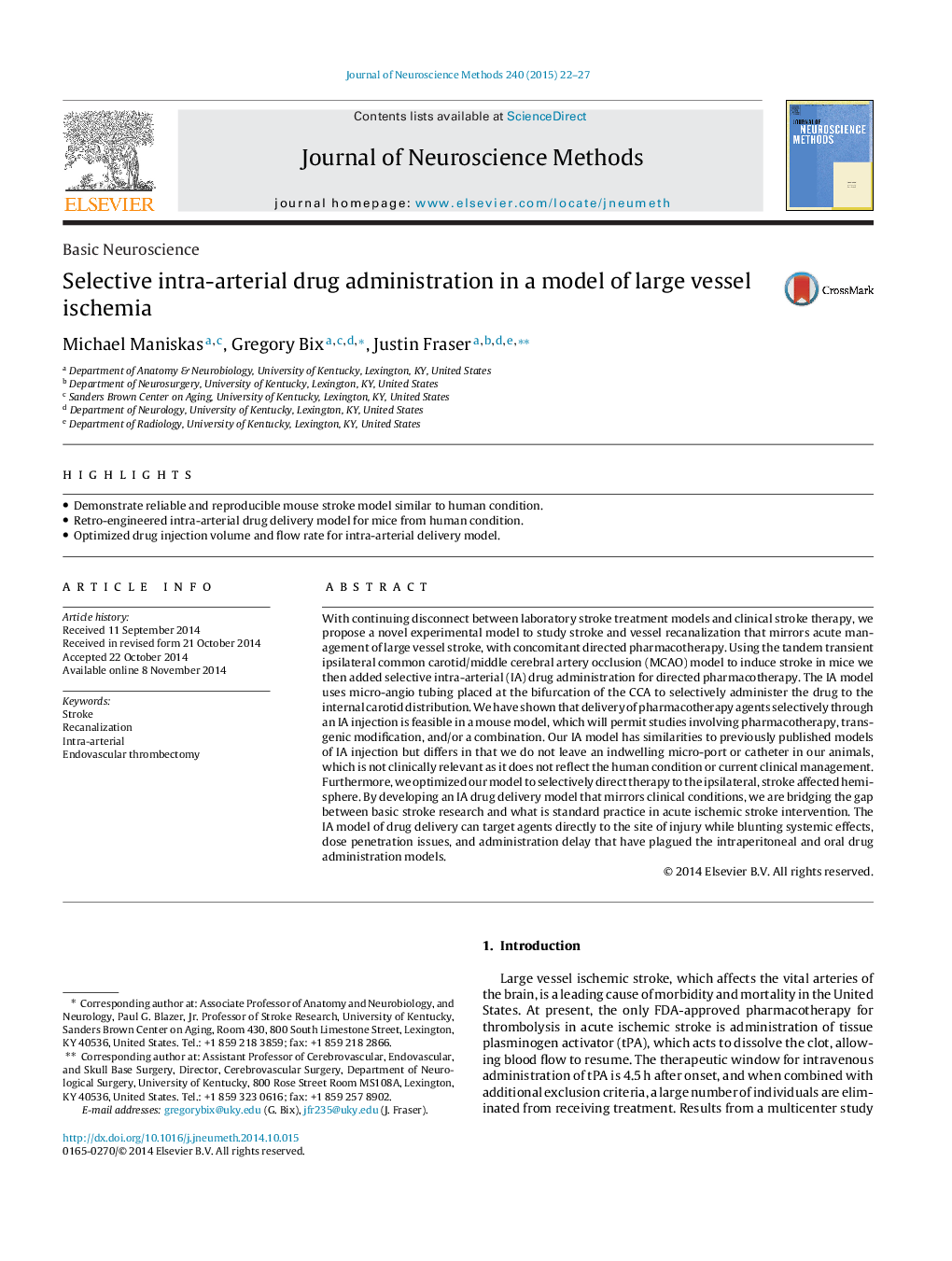| Article ID | Journal | Published Year | Pages | File Type |
|---|---|---|---|---|
| 6268408 | Journal of Neuroscience Methods | 2015 | 6 Pages |
Abstract
With continuing disconnect between laboratory stroke treatment models and clinical stroke therapy, we propose a novel experimental model to study stroke and vessel recanalization that mirrors acute management of large vessel stroke, with concomitant directed pharmacotherapy. Using the tandem transient ipsilateral common carotid/middle cerebral artery occlusion (MCAO) model to induce stroke in mice we then added selective intra-arterial (IA) drug administration for directed pharmacotherapy. The IA model uses micro-angio tubing placed at the bifurcation of the CCA to selectively administer the drug to the internal carotid distribution. We have shown that delivery of pharmacotherapy agents selectively through an IA injection is feasible in a mouse model, which will permit studies involving pharmacotherapy, transgenic modification, and/or a combination. Our IA model has similarities to previously published models of IA injection but differs in that we do not leave an indwelling micro-port or catheter in our animals, which is not clinically relevant as it does not reflect the human condition or current clinical management. Furthermore, we optimized our model to selectively direct therapy to the ipsilateral, stroke affected hemisphere. By developing an IA drug delivery model that mirrors clinical conditions, we are bridging the gap between basic stroke research and what is standard practice in acute ischemic stroke intervention. The IA model of drug delivery can target agents directly to the site of injury while blunting systemic effects, dose penetration issues, and administration delay that have plagued the intraperitoneal and oral drug administration models.
Related Topics
Life Sciences
Neuroscience
Neuroscience (General)
Authors
Michael Maniskas, Gregory Bix, Justin Fraser,
